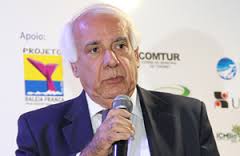Press Release IATA: Research Points to Low Risk for COVID-19 Transmission Inflight
| Research Points to Low Risk for COVID-19 Transmission Inflight Manufacturer studies provide insight into extremely few incidents of COVID-19 inflight infections. |
08 October 2020No: 81 |
| Geneva – The International Air Transport Association (IATA) demonstrated the low incidence of inflight COVID-19 transmission with an updated tally of published cases. Since the start of 2020 there have been 44 cases of COVID-19 reported in which transmission is thought to have been associated with a flight journey (inclusive of confirmed, probable and potential cases). Over the same period some 1.2 billion passengers have travelled. “The risk of a passenger contracting COVID-19 while onboard appears very low. With only 44 identified potential cases of flight-related transmission among 1.2 billion travelers, that’s one case for every 27 million travelers. We recognize that this may be an underestimate but even if 90% of the cases were un-reported, it would be one case for every 2.7 million travelers. We think these figures are extremely reassuring. Furthermore, the vast majority of published cases occurred before the wearing of face coverings inflight became widespread,” said Dr. David Powell, IATA’s Medical Advisor. New insight into why the numbers are so low has come from the joint publication by Airbus, Boeing and Embraer of separate computational fluid dynamics (CFD) research conducted by each manufacturer in their aircraft. While methodologies differed slightly, each detailed simulation confirmed that aircraft airflow systems do control the movement of particles in the cabin, limiting the spread of viruses. Data from the simulations yielded similar results: Aircraft airflow systems, High Efficiency Particulate Air (HEPA) filters, the natural barrier of the seatback, the downward flow of air, and high rates of air exchange efficiently reduce the risk of disease transmission on board in normal times. The addition of mask-wearing amid pandemic concerns adds a further and significant extra layer of protection, which makes being seated in close proximity in an aircraft cabin safer than most other indoor environments. Data Collection IATA’s data collection, and the results of the separate simulations, align with the low numbers reported in a recently published peer-reviewed study by Freedman and Wilder-Smith in the Journal of Travel Medicine. Although there is no way to establish an exact tally of possible flight-associated cases, IATA’s outreach to airlines and public health authorities combined with a thorough review of available literature has not yielded any indication that onboard transmission is in any way common or widespread. Further, the Freedman/Wilder-Smith study points to the efficacy of mask-wearing in further reducing risk. Layered Approach of Preventive Measures Mask-wearing on board was recommended by IATA in June and is a common requirement on most airlines since the subsequent publication and implementation of the Takeoff Guidance by the International Civil Aviation Organization (ICAO). This guidance adds multiple layers of protection on top of the airflow systems which already ensure a safe cabin environment with very low risks of inflight transmission of disease. “ICAO’s comprehensive guidance for safe air travel amid the COVID-19 crisis relies on multiple layers of protection, which involve the airports as well as the aircraft. Mask-wearing is one of the most visible. But managed queuing, contactless processing, reduced movement in the cabin, and simplified onboard services are among the multiple measures the aviation industry is taking to keep flying safe. And this is on top of the fact that airflow systems are designed to avoid the spread of disease with high air flow rates and air exchange rates, and highly effective filtration of any recycled air,” said Powell. Aircraft design characteristics add a further layer of protection contributing to the low incidence of inflight transmission. These include: Limited face-to-face interactions as passengers face forward and move about very littleThe effect of the seat-back acting as a physical barrier to air movement from one row to anotherThe minimization of forward-aft flow of air, with a segmented flow design which is directed generally downward from ceiling to floor The high rate of fresh air coming into the cabin. Air is exchanged 20-30 times per hour on board most aircraft, which compares very favorably with the average office space (average 2-3 times per hour) or schools (average 10-15 times per hour).The use of HEPA filters which have more than 99.9% bacteria/virus removal efficiency rate ensuring that the air supply entering the cabin is not a pathway for introducing microbes. Manufacturer Studies The interaction of those design factors in creating a uniquely low-risk environment had been intuitively understood but not previously modelled prior to the CFD simulations by the three major manufacturers in each of their aircraft cabins. The following are highlights from the manufacturers’ research: Airbus Airbus used CFD to create a highly accurate simulation of the air in an A320 cabin, to see how droplets resulting from a cough move within the cabin airflow. The simulation calculated parameters such as air speed, direction and temperature at 50 million points in the cabin, up to 1,000 times per second. Airbus then used the same tools to model a non-aircraft environment, with several individuals keeping six feet (1.8 meters) distance between them. The result was that potential exposure was lower when seated side by side on a plane than when staying six feet apart in an environment such as an office, classroom or grocery store. “After multiple, highly-detailed simulations using the most accurate scientific methods available, we have concrete data which reveals the aircraft cabin offers a much safer environment than indoor public spaces,” said Bruno Fargeon, Airbus Engineering and the leader of the Airbus Keep Trust in Air Travel Initiative. “The way that air circulates, is filtered and replaced on airplanes creates an absolutely unique environment in which you have just as much protection being seated side-by-side as you would standing six feet apart on the ground.” Boeing Using CFD, Boeing researchers tracked how particles from coughing and breathing move around the airplane cabin. Various scenarios were studied including the coughing passenger with and without a mask, the coughing passenger located in various seats including the middle seat, and different variations of passengers’ individual overhead air vents (known as gaspers) on and off. “This modeling determined the number of cough particles that entered the breathing space of the other passengers”, said Dan Freeman, the chief engineer for Boeing’s Confident Travel Initiative. “We then compared a similar scenario in other environments, such as an office conference room. Based on the airborne particle count, passengers sitting next to one another on an airplane is the same as standing more than seven feet (or two meters) apart in a typical building environment.” Embraer Using CFD, cabin air flow and droplet dispersion models validated in full-scale cabin environment testing, Embraer analyzed the cabin environment considering a coughing passenger in several different seats and air flow conditions in our different aircraft to measure these variables and their effect. The research Embraer completed shows that risk of onboard transmission is extremely low, and the actual data on in-flight transmissions that may have occurred, supports these findings. Luis Carlos Affonso, Senior Vice-President of Engineering, Technology and Strategy, Embraer, said, “The human need to travel, to connect, and to see our loved ones has not disappeared. In fact, at times like this, we need our families and friends even more. Our message today is that because of the technology and procedures in place, you can fly safely – all the research demonstrates this. In fact, the cabin of a commercial aircraft is one of the safer spaces available anywhere during this pandemic.” Safety is Always the Top Priority This research effort demonstrates the cooperation and dedication to safety of all involved in air transport and provides evidence that cabin air is safe. Aviation earns its reputation on safety with each and every flight. This is not different for flying in the time of COVID-19. A recent IATA study found that 86% of recent travelers felt that the industry’s COVID-19 measures were keeping them safe and were well-implemented. “There is no single silver-bullet measure that will enable us to live and travel safely in the age of COVID-19. But the combination of measures that are being put in place is reassuring travelers the world over that COVID-19 has not defeated their freedom to fly. Nothing is completely risk-free. But with just 44 published cases of potential inflight COVID-19 transmission among 1.2 billion travelers, the risk of contracting the virus on board appears to be in the same category as being struck by lightning,” said Alexandre de Juniac, IATA’s Director General and CEO. “The detailed computational fluid dynamics research of the aircraft manufacturers demonstrates that combining the aircraft’s existing design features with mask-wearing creates a low-risk environment for COVID-19 transmission. As always, airlines, manufacturers and every entity involved in aviation will be guided by science and global best practices to keep flying safe for passengers and crew,” said de Juniac. View the IATA Presentation (pdf) View the Airbus Presentation (pdf) View the Boeing Presentation (pdf) View the Embraer Presentation (pdf) Notes for Editors:IATA (International Air Transport Association) represents some 290 airlines comprising 82% of global air traffic.You can follow us at twitter.com/iata for announcements, policy positions, and other useful industry information. |
We represent, lead and serve the airline industryAbout Us | Programs | Policy | Publications | Services | Training | Events | PressroomIMPORTANT PRIVACY INFORMATION. The International Air Transport Association (IATA) does not sell or rent your email address to any third party. You received this email message due to your membership, participation or interest in IATA. IATA sends various advertisements, promotions and special announcements regarding products and services that we feel may be of interest to you. © Copyright 2019. All rights reserved.International Air Transport Association (IATA) 800 Square Victoria, Montreal, H4Z 1M1, CanadaPrivacy | Legal |
—
Talita Mônaco


